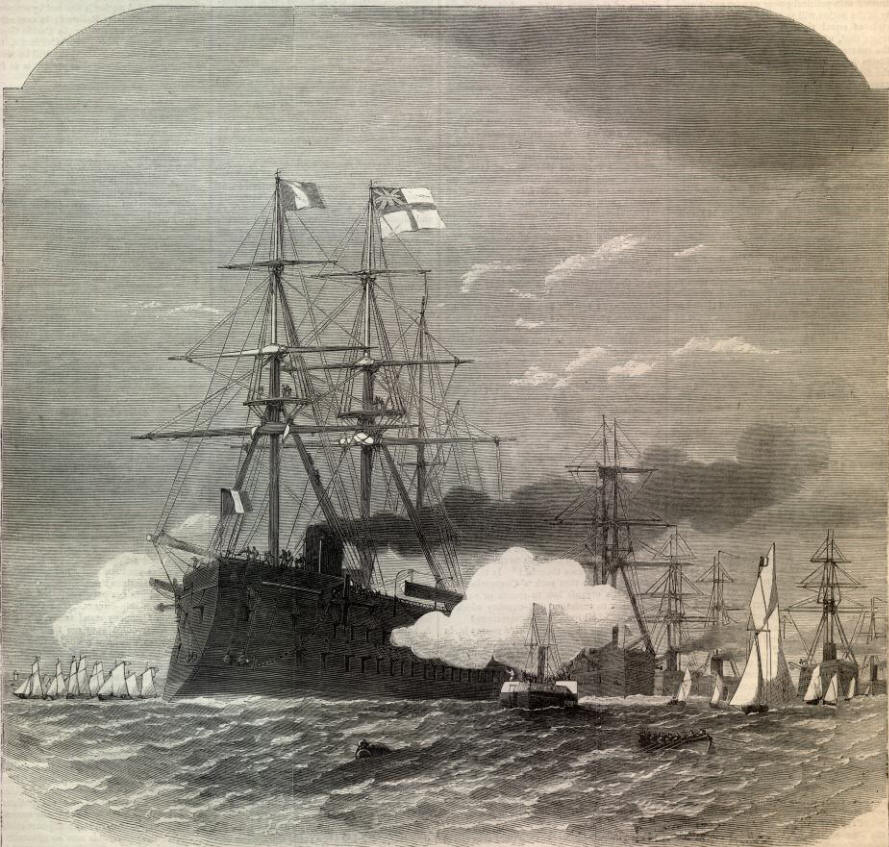|
This Site:
Civil War
Civil War Overview
Civil War 1861
Civil War 1862
Civil War 1863
Civil War 1864
Civil War 1865
Civil War Battles
Confederate Generals
Union Generals
Confederate History
Robert E. Lee
Civil War Medicine
Lincoln Assassination
Slavery
Site Search
Civil War Links
Revolutionary War
Mexican War
Republic of Texas
Indians
Winslow Homer
Thomas Nast
Mathew Brady
Western Art
Civil War Gifts
Robert E. Lee Portrait
|
Civil War Harper's Weekly, October 7, 1865
We acquired this leaf for the purpose of digitally
preserving it for your research and enjoyment. If you would like
to acquire the original 140+ year old Harper's Weekly leaf we used to
create this page, it is available for a price of $195. Your
purchase allows us to continue to archive more original material. For
more information, contact
paul@sonofthesouth.net
|
|
NEW YORK, SATURDAY, OCTOBER
7, 1865.
SINGLE COPIES TEN CENTS.
$4.00 PER YEAR IN ADVANCE.
Entered according to Act of Congress, in the Year 1865, by Harper & Brothers, in
the Clerk's Office of the District Court for the Southern District of New York.
THE FRENCH NAVAL FLEET AT
PORTSMOUTH.
LAST week we printed an excellent engraving illustrating the international naval
festival of the French and English fleets at Cherbourg. We give this week a
picture illustrating the arrival of the French fleet at Portsmouth, England.
This arrival was followed by a brilliant series of festivities commencing August
28, in which the Hums, OF SOMERSET,
the French Minister of Marine, the local authorities of Brest, Cherbourg,
and Portsmouth, and the officers and men of the rival and allied squadrons
participated.
The three weeks consumed in this mutual inter-change of naval courtesies
probably gave neither of the two nations any new information in regard to the
fleets of the other. It is said that the French
ships are faster and less perfectly protected by armor,
while the superiority in weight of ordnance rests with England. The English
think that this balance of advantages is much in their favor. Says the
Saturday Review : "
Admiral FARRAGUT sailed into the harbor of Mobile in
a wooden ship, and some other
American officers have expressed a doubt whether the advantage of
armor-plating provides a compensation for its inevitable cumbrousness. If
guns can be used at sea heavy enough to pierce any vessel which can
float, it appears not impossible that the lightest and most fragile ships may
ultimately prove to be the safest."
Now if we are not mistaken our navy has ad-vantages
both in respect of weight of ordnance and fleetness of vessels. M. MARS,
who is no other than the PRINCE DE
JOINVILLE, has contributed a
paper on this subject to the
Revue des Deux Mondes, showing that America has taught foreign nations
two lessons : First, that the armament of a ship of
war with the heaviest guns is of more importance
than defensive armor ; and, secondly, that a system of coast protection
by fleets of small Monitors and swarms of
torpedoes might prove too formidable
even for such ships as the Solferino or the
Warrior. The
resume which he gives of the decisive naval events of the war goes some
way to support his theories. When the
Merrimac encountered the first Monitor, she was beaten by her smaller
adversary simply because the Northern ship carried the heavier ordnance. The
Atlanta was the next
iron-clad
ram which the Confederates produced, and she
too was beaten by the
Weehawken, a Monitor of half
her size. The
Atlanta carried 7-inch rifled guns,
and was protected by four inches of iron inclined at an angle of about 30
degrees, backed by eighteen inches of wood. Her enemy was armed with 15-inch
guns, and four shots sufficed to compel the
Atlanta
to strike her colors. The third ram, the
Albemarle,
which was built by the Confederates, served only to illustrate the second point
on which M. MARS insists—the value of torpedoes, when used with skill and
audacity. She lay moored up
the Roanoke, and was blown out of the water by a
torpedo coolly fixed and fired by a United States lieutenant and a boat's
crew of half a dozen men.
The PRINCE DE JOINVILLE
evidently deems the American system of naval warfare more formidable than the
French. "We have nothing," he says, " equivalent to the American 15-inch gun."
While the French field and siege guns are excellent, the Prince considers the
French naval gun, which is in-tended to smash iron-plates, quite another thing.
The American Monitors are invulnerable to the best
guns carried by the
Magenta or by any other
French vessel, while the guns
carried by the Monitors could
smash the iron-plates of the best French vessel with perfect ease.
THE NAVAL FESTIVAL AT PORTSMOUTH,
ENGLAND--ARRIVAL OF THE FRENCH FLEET- THE "
SOLFERINO" SALUTING THE ENGLISH FLAG.
|

